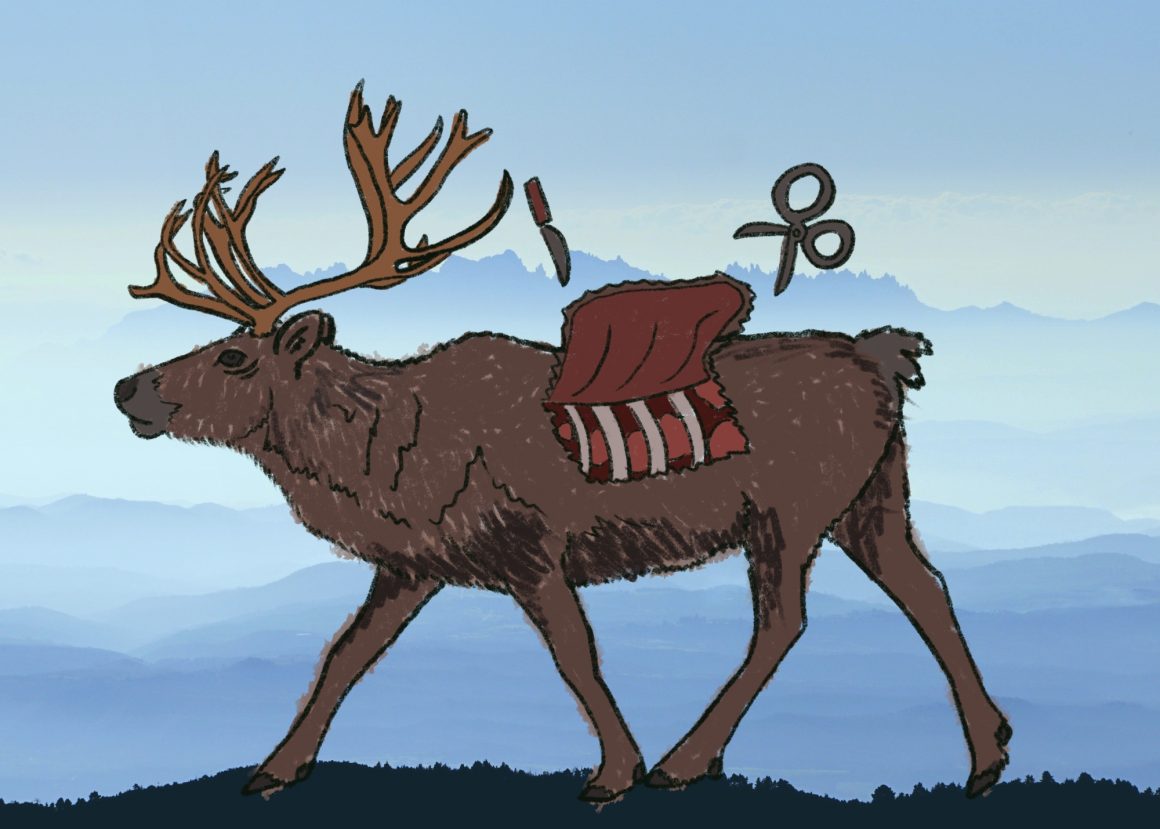
U of C researchers explore the regenerative properties of skin tissue through reindeer models
By Renee Ta, April 3 2023—
If you have ever experienced a major cut or burn, you may notice that a scar forms after your injury is healed. This can be problematic because your skin will rarely be regenerated identically to its former state. Some reptiles and amphibians such as lizards can regenerate lost limbs perfectly, but the majority of mammals form scars to close their wounds quickly as they are incapable of this form of regeneration. However, one animal that does not receive enough credit for its highly regenerative abilities is the deer.
The University of Calgary is one of the few research institutions in the world that has a captive herd of reindeer. Researchers at the U of C are using these reindeer models to understand how and why we form scars to modify those processes and encourage the regeneration of skin wounds.
The Gauntlet interviewed Dr. Jeff Biernaskie, a professor researching stem cell biology and regeneration in the Faculty of Veterinary Medicine, about the advantages of using reindeer models specifically along with the progression of the research project.
“What we were really fascinated by were their antlers. If the animal damages one of the antlers, it will actually regrow perfectly back to its original state,” said Biernaskie.
Reindeer antlers are covered in specialized skin called velvet, which looks very similar to human skin. It is thick, highly pigmented, contains a massive blood supply and has hair follicles as well as many different glands. This makes reindeer velvet analogous to human skin, and knowledge gained from studying these models can be applied to encourage skin regeneration rather than scar formation.
“We conducted a series of experiments looking at wound healing in velvet and another part of the body on the back skin,” said Biernaskie. “There’s some really unique differences between these dermal fibroblasts in connective tissue cells within the velvet and within the back skin that enables this regeneration to happen.”
When comparing antler velvet to the reindeer’s back skin, it was discovered that back skin forms a hypertrophic scar while velvet does not scar and regenerates perfectly. The initial location of the wound could not be identified in the velvet. Through a sophisticated technique called single-cell RNA sequencing (scRNA-seq), Biernaskie and his team were able to study the differences in transcriptional states between velvet and back skin fibroblasts.
“Back skin fibroblasts expressed all of these inflammatory signals that were never present in velvet fibroblasts,” he said. “As we mature, the fibroblasts in our body acquire this inflammatory state [and] secrete cytokines that make the environment inside the skin, even before an injury, already inflammatory.”
Studying the mechanisms of scar formation through scRNA-seq and comparing velvet with back skin in reindeer models can be applied to develop effective therapies for promoting the regeneration of skin in place of forming scars. The movement of these ideas from the laboratory to clinical application is catalyzed by Biernaskie’s partnership with the Calgary Firefighters Burn Treatment Society and Calgary Firefighters Burn Treatment Centre at the Foothills Hospital. The research also would not be possible without funding from the Natural Science and Engineering Research Council. The Faculty of Veterinary Medicine also plays a critical role.
“The beauty within being in the veterinary school here is that we are lucky to have large animal veterinary expertise that we collaborate with actively in this project,” said Biernaskie. “We have an outstanding animal care staff at our large animal facility within the vet school that really enables us to safely and effectively handle these animals in order to do these experiments.”
Biernaskie also gives credit to Dr. Sarthak Sinha and Dr. Holly Sparks — who completed their PhDs in the Biernaskie lab — for their large contributions while co-leading the study.
